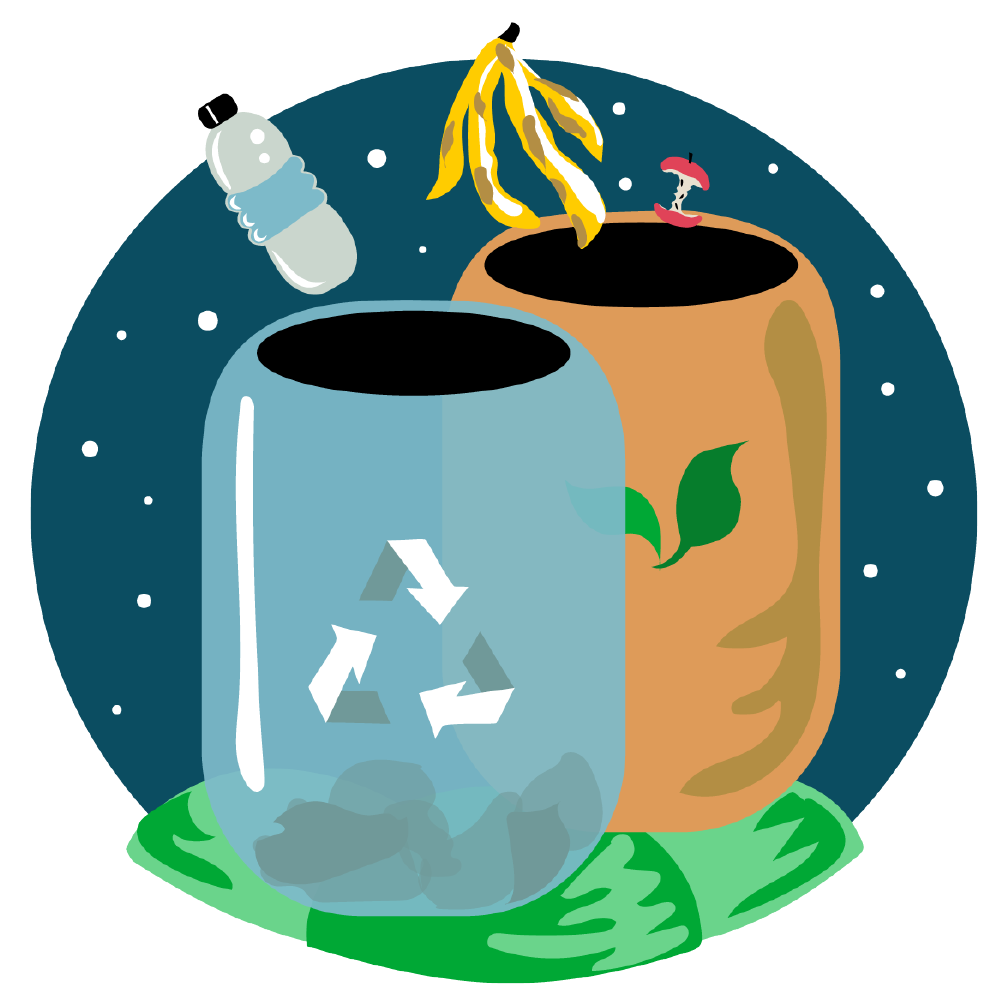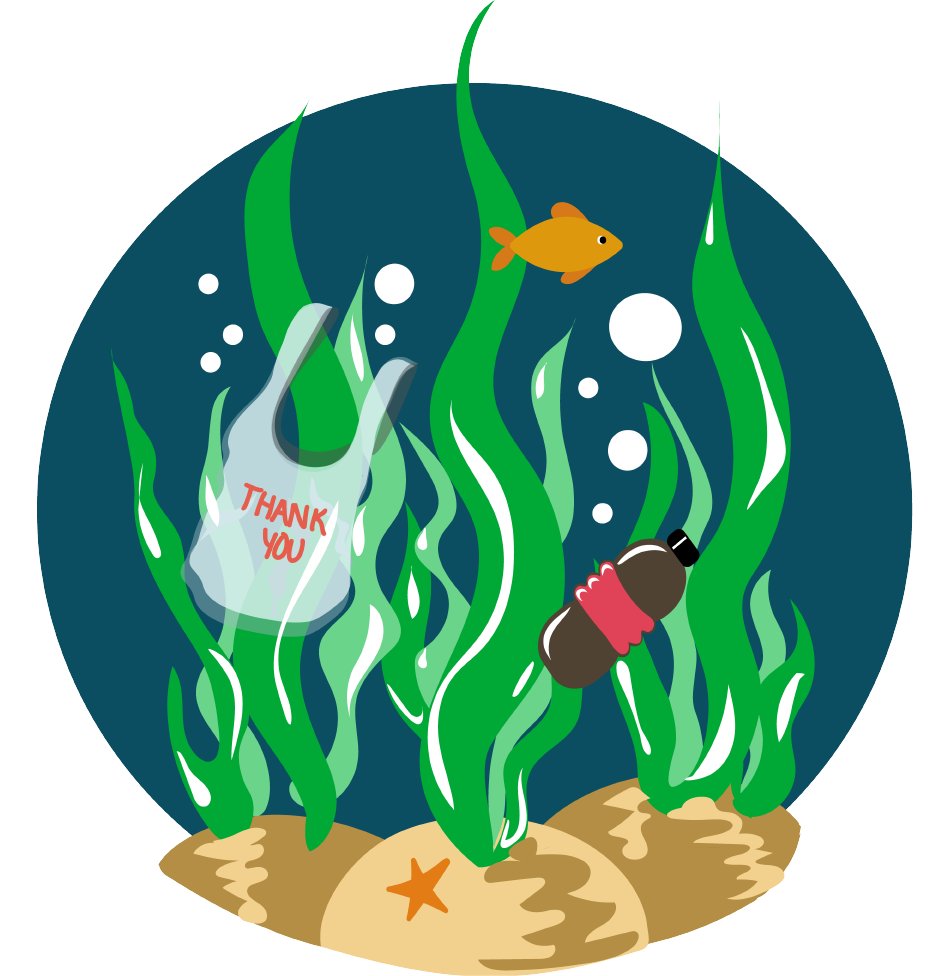
and Our Changing Ecosystems
Plastic pollutants impact a number of ecosystems. Climate leader Emilia Jankowska, Ph.D. discusses this problem, revealing the microplastics in the everyday products we use. Emilia is an oceanographer who studies marine benthic systems and the relationship they have with human presence, including the negative effects of microplastic pollution. She gives us an introduction to carbon cycles and sinks, benthic biodiversity, food-web restoration, and the importance of changing our own behaviors to be more eco-centric.
Emilia Jankowska: We are trying to assess what the scale of the plastic pollution problem actually is. We know that there are tons of plastic currently going into the ocean, including what has accumulated since we started using plastics 70 years ago. This past July, the Pew Charitable Trusts (NGO) and Systemiq, released a report called “Breaking the Plastic Way”. Their approach is to transform the whole plastic system. Some of their solutions are to reduce the production of plastics by eliminating unnecessary plastic packaging, introducing new delivery models of products, and different packaging of products as well as upscaling recycling. This was a global report talking about different solutions for the high, middle and low income countries. I contributed as an expert on microplastics, which are an important component of the overall pollution in the oceans. We are hoping the report will accelerate the positive change of the whole plastic value chain. There are some initiatives from big corporations to cut the plastic in their products by half in 10 years from now e.g. “The Plastic Pact” of the Ellen MacArthur Foundation that gathers producers and corporations and works with them on strategy and steps that have to be done to cut plastic in their products. There are also many government level regulations and nowadays around 90 countries have some regulations about plastics bags usage. There are also different initiatives taking place, such as the Ocean Cleanup Project which actively removes plastic in the ocean, as well as local and regionalised initiatives that involve beach cleanups and plastic capture by means of different kinds of devices.

EJ: In Indonesia, I was cooperating with an NGO that was dealing with conservation and education. They worked with rural communities that don't have any means of waste management systems at all. When plastic was introduced to their markets, they didn’t know what to do with it when it became a waste. We first provided different types of bins for the communities by cutting those large 5-gallon bottles of water to create two types of bins so that they could separate the organic from the plastic waste. The NGO also opened a small recycling facility for working young people to be employed. They started this kind of system where people who were able to collect a significant amount of plastic could come to those small centers and exchange the plastic for simple foods like sugar or oil. As a result, this encouraged them to bring the waste to these centers. Once the centers were able to collect tons of plastics, they then called for a recycling company to come and pick up the waste. I was also helping them apply for grants to get more funding to expand to other villages. We also go to schools to teach kids through puppet shows, about marine animals and plastics.
EJ: My home institute, the Institute of Oceanology, Polish Academic Sciences, has a long term survey in the European Arctic in Spitsbergen. For 25 years, every summer, our research vessel went there. What we were able to observe from our own eyes is the glaciers melting; it's really unusual for nature and climate to change that fast. The whole food chain is being affected. Once the glaciers melt, the whole cycle of carbon, which is the main source of food for organisms, is completely different.
For example, there are birds—little auk that are able to dive very deep, up to 40 meters for foraging. These birds collect zooplankton, which are tiny organisms living in oceans and in Sitsbergen fjords they used to have a high calorie content. Because of climate change, the flows of the currents that were normally going to the fjord have changed. The current that was normally there no longer has the cold, fresh water flow full of zooplankton, so those birds have had to change their feeding grounds. They have to fly hundreds of kilometers to the open ocean in order to find their food source. We are seeing whole colonies moving and disappearing. This has hefty effects on the Arctic islands because there’s not too much life in the Arctic as it is because it’s a rough environment. When these kinds of colonies move away from one area, their absence also changes the makeup of the soil so it carries less and less nutrients, and as a result, nothing grows in it anymore. It has really become frantic for the whole ecosystem.
EJ: We need to treat climate warming globally. I think we still have those 10 years, until 2030, to reverse what is coming. Within those 10 years, we have to completely become carbon neutral, changing places, technologies, transportations, and energies to lower greenhouse gas emissions and also protect natural ecosystems that are playing a function of carbon sinks where they naturally store a lot of carbon. During my work and with Project Drawdown, we are modeling, finding and measuring different types of solutions to achieve this drawdown in greenhouse gases. Diet reshaping is one important solution, as well as natural based approaches, such as protecting or restoring grasslands and also seagrasses in the ocean. I would be optimistic and I would believe in humans, that in this 10 year time frame, we can change the ways we run our economies and how we interact with the world. I do think we can prevent further climate changes in the Arctic that could be very destructive, but I don't think we can go back to what was before.

EJ: My work with the plastic subject completely changes the way I consume. My visit in Indonesia was kind of life changing. It opened my eyes to the scale of the plastic pollution problem. Over there, you really see what it means: a beach where you cannot see sand, but you just see plastic. When I was working with Systemiq on the “Breaking the Plastic Way” report, I was learning how microplastics are in our cosmetics. Producers are inserting microplastics intentionally because they bind to different types of compounds easily. It’s a great type of compound that’s clear and easy to apply, and it’s everywhere! It is in our toothpaste, in our washing powders, everywhere. I started to become aware of that and I started to make my own cosmetics. I don’t buy anything, maybe only toothpaste, but everything else I'm able to make myself. I also produce less plastic waste coming from the bottles and from the packaging. I switched to shampoo bars instead of shampoo in a bottle and I reduced the amount of cosmetics that I would normally use because I think it’s not necessary anymore. I don’t like to paint my nails anymore either. I always try to have my reusable bags with me for vegetables and groceries too. These are some examples of habits I wasn’t doing before, but I think starting with cutting out your own plastic is pretty easy because everyone uses it.

EJ: I think it means exactly what we are doing right now. Young people are asking questions about the environment, climate and different problems that we have in this world. If we start to have a conversation with different types of people from different types of sectors from society, we will understand these problems more. I was pursuing a career in academia and when I finished my Ph.D., I was working as a scientist, analyzing the effects of climate change. During this whole time, I was thinking, “Okay, we know climate change is causing serious problems to the environment, but what can we do about it?”. That's when I decided to work for a sustainability company to actually make an impact. I would like my climate leadership, and everything that I do in the future to have a real impact. I hope the “Breaking the Plastic Pipe” report, and also Project Drawdown work will have a great, real impact on the climate change problem.
Emilia Jankowska, Ph.D. is an oceanographer who studies marine benthic systems and the relationship they have with human presence, including the negative effects of microplastic pollution.
Cathryn Esposito is a design student at Mason Gross School of Arts who incorporates film photography, silkscreen and block printing, painting techniques, and digital drawing into her design practice.
Sarah Poon is a design student at Mason Gross School of Arts.
↑